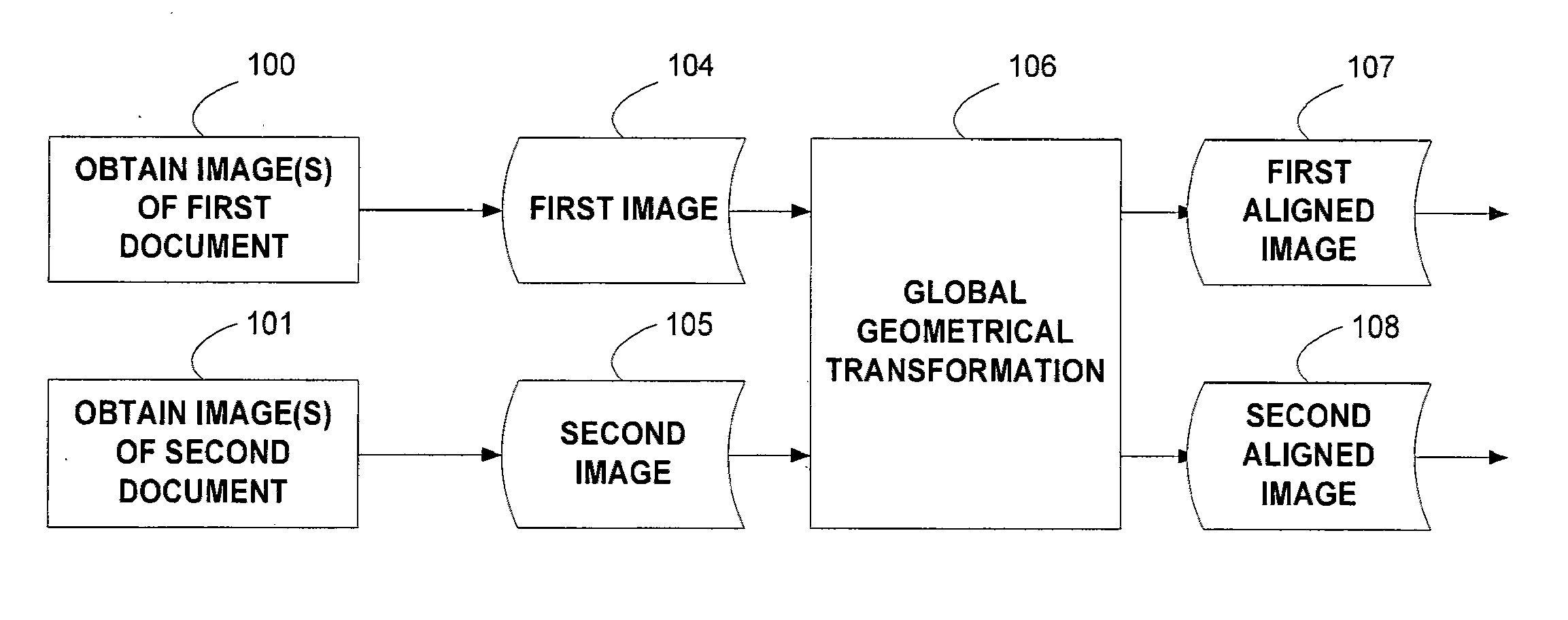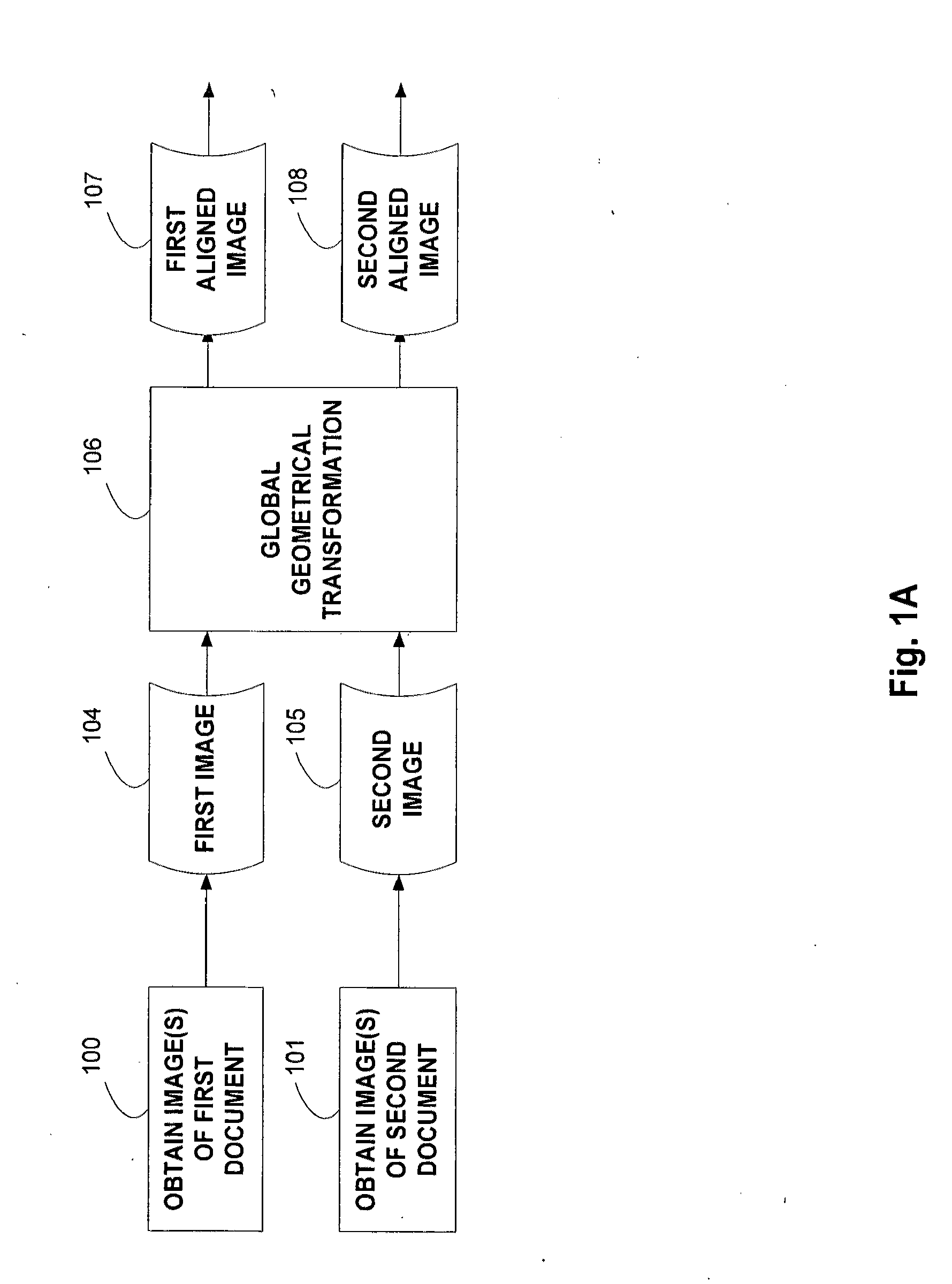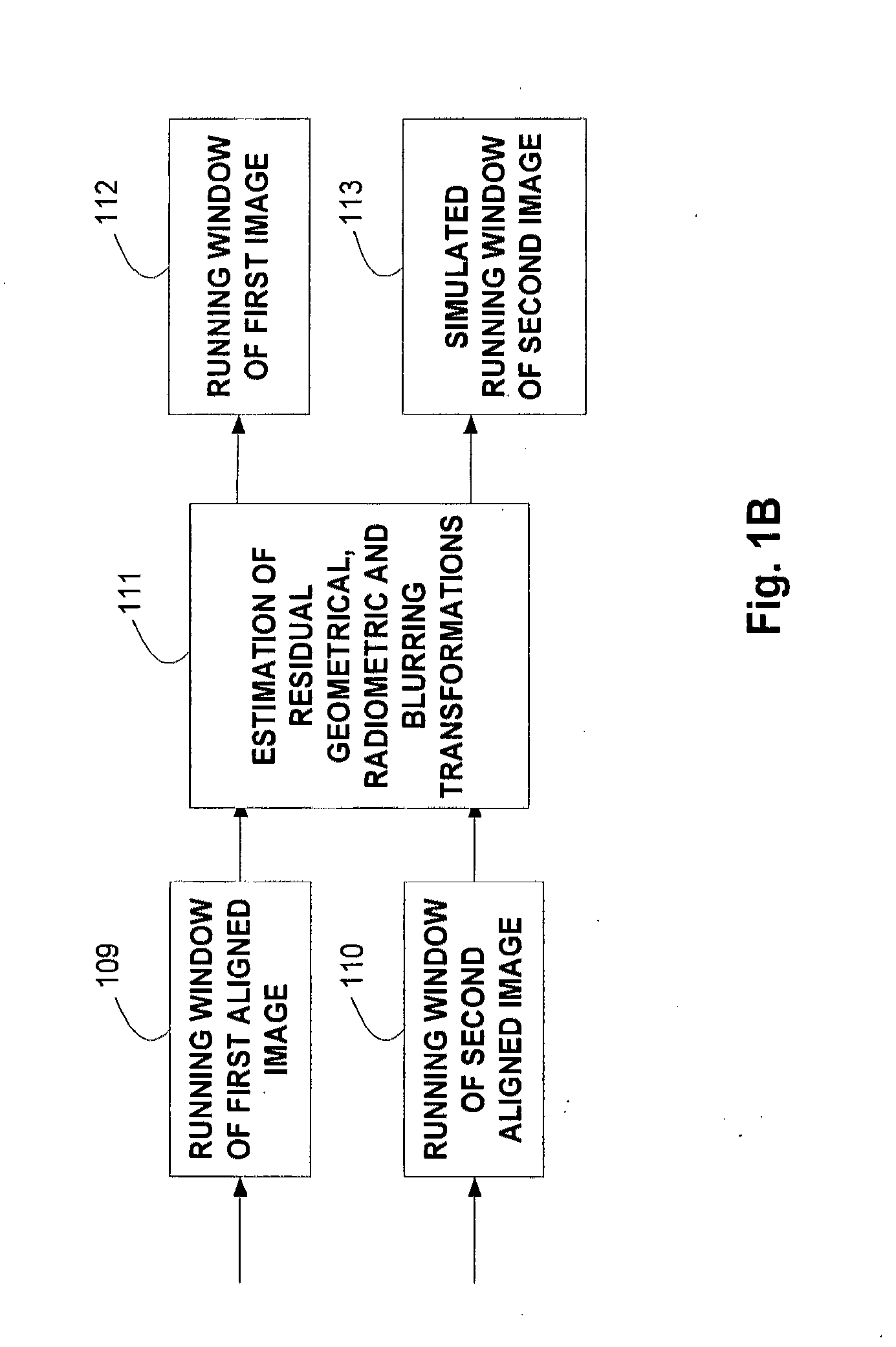Document comparison and analysis
a document comparison and analysis technology, applied in the field of document comparison and analysis, can solve the problems of time-consuming and easy errors in proof reading procedures, limited ocr procedures, and complicated comparisons
- Summary
- Abstract
- Description
- Claims
- Application Information
AI Technical Summary
Benefits of technology
Problems solved by technology
Method used
Image
Examples
Embodiment Construction
[0034]The present invention provides an improved method for comparing two documents in image format, in order to verify that the two documents are similar or if they are different to display the differences between the two documents.
[0035]FIG. 1 is a simplified block diagram of the method of this invention.
[0036]In step 100, a first digital image 104 of a first document is obtained.
[0037]In step 101, a second digital image 105 of a second document is obtained.
[0038]Obtaining one or both images may include scanning, capturing with a digital camera, transforming a text image into a digital image with appropriate software or retrieving from storage.
[0039]In certain cases, the second digital document may not be present on the same storage device as the first image. In that case it is transferred to a common memory storage as the first image for common processing. Without limitation, the processing may be performed on the device that served for capturing the first image or on a remote de...
PUM
 Login to View More
Login to View More Abstract
Description
Claims
Application Information
 Login to View More
Login to View More - R&D
- Intellectual Property
- Life Sciences
- Materials
- Tech Scout
- Unparalleled Data Quality
- Higher Quality Content
- 60% Fewer Hallucinations
Browse by: Latest US Patents, China's latest patents, Technical Efficacy Thesaurus, Application Domain, Technology Topic, Popular Technical Reports.
© 2025 PatSnap. All rights reserved.Legal|Privacy policy|Modern Slavery Act Transparency Statement|Sitemap|About US| Contact US: help@patsnap.com



